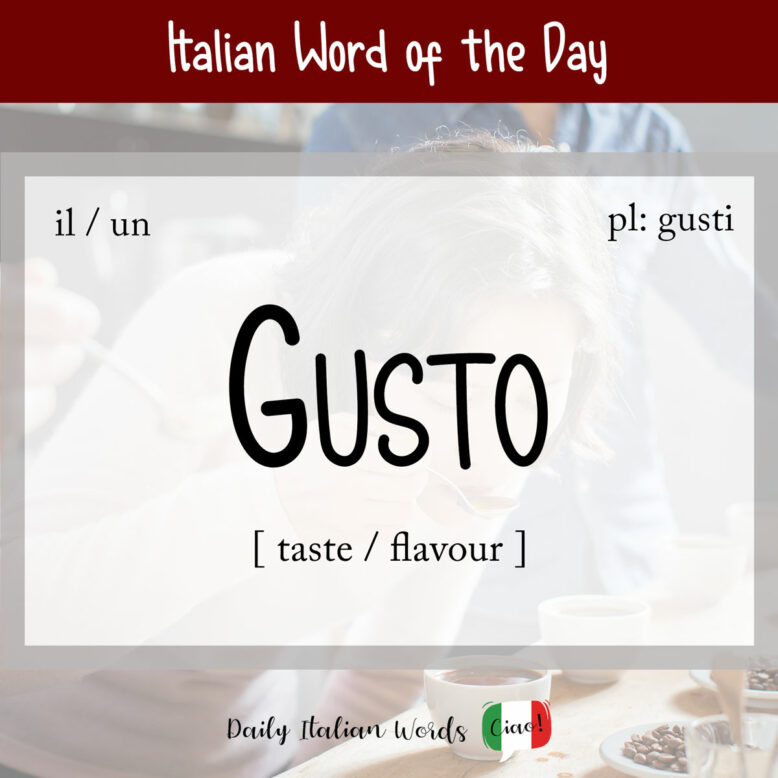At its core, the Italian word gusto refers to the literal sense of taste. It plays a key role in our perception of flavours, working alongside our olfatto, or sense of smell, to create the full experience of taste.
gusto
taste / flavour

Gusto is derived from the Latin gustus of the same meaning. Being a masculine noun, it takes the following definite and indefinite articles:
- il gusto = the taste
- un gusto = a taste
- i gusti = the tastes
- dei gusti = some tastes
In addition to referring to the actual sense of taste, it also denotes tastes and flavours themselves. Here are a few of the most common tastes one might encounter:
- dolce = sweet
- salato = salty
- amaro = bitter
- acido = sour
- piccante = spicy (as in hot)
- forte = strong
- leggero = light
- aromatico = aromatic
- fruttato = fruity
- cremoso = creamy
- speziato = spicy (as in seasoned with spices, not hot)
- saporito = savoury
- delicato = delicate
- intenso = intense
- ricco = rich
Questa salsa ha un gusto piccante.
This sauce has a spicy flavour.

If the word gusto looks familiar, that’s because we’ve adopted it into English, but with its figurative meaning—enjoyment, fun, or enthusiasm—rather than its literal one. From this meaning, we get the following expressions:
- prenderci gusto = to grow to like (something) – literally “to get the taste for”
- di / con gusto = heartily or with gusto – literally “of / with taste”
Non mi dispiace questo sport, ma ho bisogno di tempo per prenderci gusto.
I don’t dislike this sport, but I need time to grow to like it.
Did you know that…
In colloquial Italian, the plural gusti can be used figuratively to denote spices or herbs? For example, you can say aggiungiamo i gusti alle patate, which means let’s add spices and herbs to the potatoes.
A second figurative meaning of gusto relates to personal preference or inclination. When this is the meaning, it is mostly used in its plural form gusti. You might hear someone say I gusti son gusti (literally “tastes are tastes”), which is an expression used when it’s difficult to explain why people have different tastes, especially regarding something you don’t particularly like. The English equivalent is there is no accounting for taste.
Likewise, you might hear, Ognuno ha i suoi gusti, which is the Italian equivalent of Each to their own.
Ognuno ha i suoi gusti.
Each to their own.
Then there is the concept of taste, referring to one’s ability to discern high standards or aesthetic quality. A friend compliment you by saying, Tu hai gusto per l’arte (you have good taste in art), while my mother-in-law takes pride in her gusto del bello, or her appreciation for beauty.

Just as something can be done in good taste, actions or statements can also be described as di cattivo gusto (in bad taste). For example, commenting on and deriding a child’s behaviour in front of a group while the child is present is considered in poor taste.
È una battuta di cattivo gusto.
It’s a poor taste joke.
Heather Broster is a graduate with honours in linguistics from the University of Western Ontario. She is an aspiring polyglot, proficient in English and Italian, as well as Japanese, Welsh, and French to varying degrees of fluency. Originally from Toronto, Heather has resided in various countries, notably Italy for a period of six years. Her primary focus lies in the fields of language acquisition, education, and bilingual instruction.


